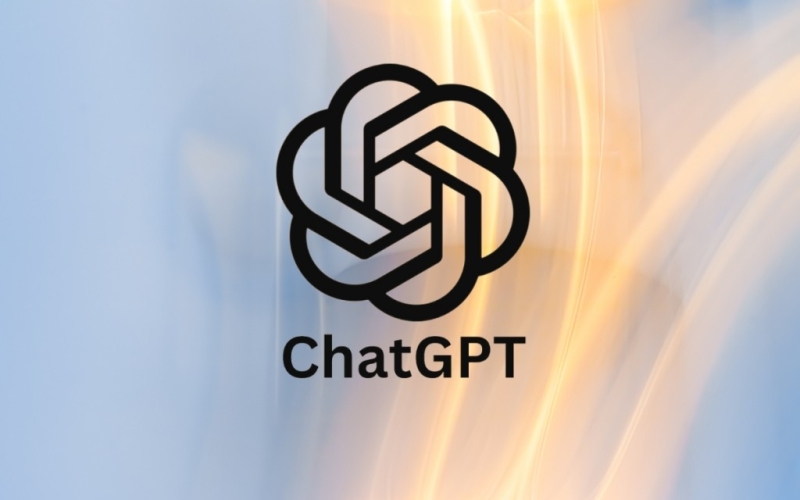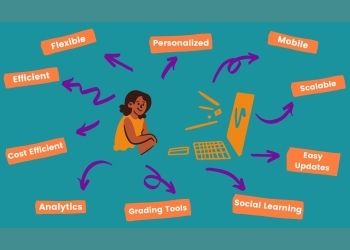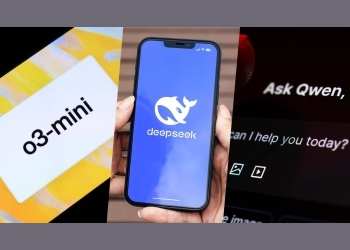
In the rapidly evolving landscape of artificial intelligence, generative AI tools have emerged as a transformative force. These tools are not just reshaping industries but also redefining how humans interact with technology. From creating art to composing music, writing code, generating text, and even designing products, generative AI has become an indispensable asset for businesses, creators, and individuals alike. Among these groundbreaking innovations stands ChatGPT, one of the most advanced language models ever created. But is it truly unmatched? Or do other generative AI tools pose a challenge to its dominance?
This article delves into the world of generative AI tools, exploring their significance, similarities, strengths, pricing structures, user accessibility, and more. We'll also examine whether ChatGPT remains on the cutting edge or if competitors are closing in.
What Are Generative AI Tools?
At their core, generative AI tools use machine learning algorithms—specifically deep neural networks—to create new content based on patterns learned from vast datasets. Unlike traditional AI systems that focus on classification or prediction tasks (e.g., identifying objects in images), generative models aim to produce entirely original outputs such as text, images, videos, audio, and even 3D models. This capability makes them uniquely suited for creative applications where innovation and novelty are paramount.
Some popular examples of generative AI include:
Text Generation : Models like GPT-4, Claude, Bard, and others can generate coherent, contextually relevant paragraphs, articles, scripts, and even entire books.
Image Creation : Tools like DALL·E, MidJourney, Stable Diffusion, and Canva’s Magic Design allow users to craft stunning visuals by inputting simple text prompts.
Music Composition : Platforms like AIVA, Amper Music, and Soundraw enable non-musicians to compose professional-quality tracks effortlessly.
Code Writing : GitHub Copilot, Replit, and Tabnine assist developers by suggesting lines of code or automating repetitive tasks.
Video Editing & Animation : RunwayML and Synthesia let users manipulate video footage or generate animations using AI-powered techniques.
Each tool brings something unique to the table, catering to specific needs while pushing boundaries in creativity and productivity.
The Importance of Generative AI Tools
Generative AI tools hold immense value across various sectors due to their ability to streamline workflows, enhance creativity, reduce costs, and democratize access to specialized skills. Here’s why they matter so much:
Efficiency Boost : By automating routine processes, these tools free up time for professionals to focus on higher-value activities. For instance, marketers no longer need to spend hours brainstorming ad copy when AI can suggest compelling headlines within seconds.
Creative Amplification : Artists, writers, musicians, and designers benefit immensely from collaborating with AI. It helps overcome creative blocks, provides fresh perspectives, and enables experimentation without fear of failure.
Cost Reduction : Small businesses and solo entrepreneurs gain access to high-quality resources previously reserved for large corporations. Instead of hiring expensive graphic designers or composers, they can leverage AI tools to achieve similar results at a fraction of the cost.
Accessibility : People with limited technical expertise can now participate in fields traditionally dominated by experts. Whether it’s coding, filmmaking, or game development, generative AI lowers barriers to entry.
Personalization : Brands can tailor experiences for individual customers through personalized recommendations, custom designs, and dynamic content generation powered by AI.
Research Advancements : Scientists and researchers utilize generative models to simulate complex scenarios, predict outcomes, and accelerate discoveries in areas ranging from drug discovery to climate modeling.
ChatGPT vs Other Generative AI Tools
While numerous generative AI tools exist, none have garnered quite the same level of attention as ChatGPT. Developed by OpenAI, this conversational AI model has captivated audiences worldwide with its impressive conversational abilities, versatility, and depth of knowledge. However, it faces stiff competition from rival platforms. Let’s compare ChatGPT with some leading contenders in terms of key metrics:
1. Strengths of ChatGPT
Conversational Fluency : ChatGPT excels at maintaining natural, engaging conversations over multiple turns. Its contextual understanding ensures responses remain relevant and coherent throughout extended dialogues.
Multilingual Support : With support for over 100 languages, ChatGPT caters to global audiences effectively.
Customizability : Businesses can fine-tune ChatGPT for specific use cases via API integrations, ensuring alignment with organizational goals.
Wide Range of Applications : From customer service chatbots to educational assistants, ChatGPT adapts seamlessly to diverse roles.
2. Competitors’ Unique Selling Points
Claude (Anthropic) : Known for its robust safety mechanisms and ethical considerations, Claude prioritizes responsible AI usage. It offers enhanced privacy features, making it ideal for sensitive discussions.
Bard (Google) : Leveraging Google’s extensive search capabilities, Bard delivers highly accurate information backed by real-time data. Its integration with Google Workspace enhances productivity significantly.
DALL·E (OpenAI) : Specializing in image synthesis, DALL·E creates photorealistic illustrations based on textual descriptions, outperforming many rivals in artistic quality.
MidJourney : Focused exclusively on visual content, MidJourney produces surreal, dreamlike imagery perfect for branding campaigns or experimental art projects.
GitHub Copilot : Tailored specifically for software engineers, this tool accelerates coding speed and accuracy, reducing errors and boosting efficiency.
3. Where They Excel
ChatGPT : Best for general-purpose interactions requiring nuanced communication and broad knowledge bases.
Claude : Ideal for secure environments demanding strict adherence to ethical guidelines.
Bard : Preferred choice for fact-checking and accessing up-to-date information.
DALL·E & MidJourney : Top picks for creative professionals seeking stunning visuals.
GitHub Copilot : Essential companion for developers aiming to optimize workflow.
Pricing Structures
One crucial factor influencing adoption rates is affordability. Pricing models vary widely among generative AI tools, depending on factors like licensing type, feature set, and target audience. Below is a breakdown of common pricing strategies:
Subscription Plans
Most cloud-based services adopt subscription-based models offering tiered plans:
Free Tier : Basic functionality available to casual users.
Standard Tier : Enhanced features suitable for small teams or freelancers.
Enterprise Tier : Advanced capabilities tailored for large organizations, including priority support and customization options.
For example:
ChatGPT charges $20/month for Plus plan access.
DALL·E operates under a pay-as-you-go model starting at $0.02 per image.
MidJourney offers monthly subscriptions ranging from $10–$120.
Per-Use Fees
Certain platforms charge per request or output generated, appealing to budget-conscious users who require occasional assistance rather than continuous engagement.
On-Premises Solutions
For enterprises wary of cloud dependencies, on-premises installations provide greater control over data security and compliance. These solutions typically involve upfront licensing fees plus maintenance costs.
User Accessibility
Democratizing access to generative AI remains a top priority for developers. Efforts focus on simplifying interfaces, improving documentation, and fostering inclusive design principles. Key aspects include:
Ease of Use : Intuitive dashboards ensure beginners can navigate complex functionalities effortlessly.
Integration Capabilities : Seamless compatibility with existing tools and platforms encourages widespread adoption.
Learning Resources : Tutorials, webinars, and community forums empower users to maximize potential benefits.
Language Options : Multilingual support ensures global reach and inclusivity.
Despite progress, challenges persist regarding equitable access. High computational requirements often restrict usage to well-funded institutions or regions with reliable internet connectivity. Addressing these disparities will be critical moving forward.
Future Prospects
As generative AI continues advancing, we can expect several trends shaping its trajectory:
Increased Collaboration Between Humans and Machines : Rather than replacing human creativity, AI will augment it, enabling symbiotic partnerships.
Ethical Framework Development : Stricter regulations governing AI behavior and accountability will emerge to safeguard societal interests.
Hybrid Models : Combining strengths of different architectures may yield superior performance and flexibility.
Edge Computing Adoption : Decentralized processing reduces latency and enhances scalability, facilitating real-time interactions.
Generative AI tools represent a paradigm shift in how we approach problem-solving, creativity, and collaboration. While ChatGPT leads the pack in conversational prowess, complementary offerings shine brightly in niche domains. As technology matures, choosing the right tool depends largely on intended purpose, budget constraints, and personal preferences.
Ultimately, the true power of generative AI lies not in surpassing human abilities but in amplifying them. Together, humans and machines unlock unprecedented possibilities, paving the way for a brighter, more innovative future. So embrace the revolution—it’s only just begun!














